The Longshan US military base in downtown Seoul has a history of more than 60 years. For decades, it has been the command center of the US military stationed in South Korea. On the 11th, the US Army Command in South Korea moved from Seoul to Pyeongtaek and took an important step in the redeployment of the US military in South Korea.
On the 11th, the US Army's 8th Army Command, which commanded the ground forces of the US military in South Korea, moved to the Pyeongtaek base on Gyeonggi-do. The 8th Army is the only field force in the US Army's permanent frontier deployment. It is the main force of the US military stationed in South Korea. Its headquarters is called by the Korean media as a symbol of the Korea-US alliance. Therefore, this relocation has important symbolic significance.
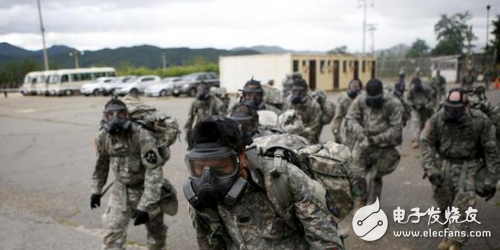
US soldiers stationed in South Korea in the competition (data map)
The US military stationed in South Korea concentrated on resettlement
In fact, the relocation project of the US military base in South Korea involves not only the two bases of Longshan and Pingze. The project is to concentrate the US military bases scattered in 91 locations in the central area of ​​Pyeongtaek-Osan and the southern section of Daegu, Gyeongju and Jinquan. Through redeployment, the base area of ​​the US military base in Korea will be reduced from 241.97 million square meters to 76.75 million square meters. After the US military stationed in South Korea left, the land will be returned to the South Korean side, and the Longshan base will be transformed into a large-scale park.
Most of the US military forces were relocated to the south of the Han River.
The Pyeongtaek base, which was built with US$10.7 billion, will become the largest base of the US overseas army base and the best overseas military facility in the United States. The area of ​​the Pyeongtaek base is 14.68 million square meters. By the end of this year, more than 20,000 US troops stationed in South Korea will be stationed in Pyeongtaek. By then, most of the troops of the US troops stationed in South Korea were evacuated from the north of the Han River to the south of the Han River. The Pyeongtaek Port, the Pyeongtaek Station, and the Osan Base will be the entrance to the arrival of the US military reinforcements and the exit of non-combatants.
Relocated for over 60 years and moved for 14 years
The Longshan US military base in downtown Seoul was built in 1953. In 1966, the United States and the United States signed the "Agreement on the Status of the US Army in Korea". The Korean-US Joint Command was formally established at the Longshan Base in 1978 12 years later. The operational command of the United Nations Army was also handed over to the Korea-US Joint Command.
In fact, the US military base moved south, as early as the 1980s and 1990s. In the 1980s, South Korea’s economy grew at a high rate and set off a development boom. The Longshan base in downtown Seoul was accused of obstructing traffic. When Lu Taiyu was running for the presidency, he relocated the Longshan base as a campaign promise. After being elected president, Lu Taiyu signed a memorandum of understanding with the United States on the relocation of the US military base in South Korea in June 1990, but it has since disappeared. In 2003, the government of Roh Moo-hyun came to power, and the two countries agreed to move the US military base stationed in South Korea to Pyeongtaek City, Gyeonggi-do before 2008. However, in the subsequent presidential resignations, the relocation of the base was repeatedly postponed until 2017, when the Pyeongtaek base was finally completed, and the relocation work lasted for 14 years. The Korean and US governments decided to basically complete the redeployment of US troops stationed in South Korea during the year.
High relocation costs and other controversies in Korea
Han Jun said that the relocation of the US military base in South Korea will be completed successfully, which will create conditions for the stable deployment of the US military in South Korea and lay a solid foundation for the future upgrade of the Korea-US alliance. However, issues such as high relocation costs have caused controversy in South Korea.
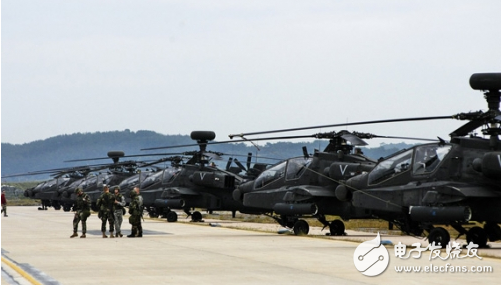
AH-64 series attack helicopter equipped with US military equipment in South Korea
According to the Yonhap News Agency, the budget for the relocation project was originally 7 trillion won (about 41.4 billion yuan), and the actual cost more than doubled to 16 trillion won (about 94.6 billion yuan), of which the Korean side assumed 9 Trillion won (about 53.2 billion yuan), and it is likely to continue to increase in the future.
In addition, in 2014, when the Park Geun-hye administration came to power, the two sides agreed to leave the joint command at the Longshan base through consultations. The remaining problems such as the size of the US military base and the environmental pollution purification cost sharing are still many.
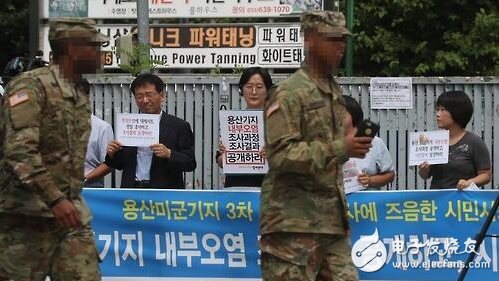
On August 17, 2016, Korean citizen groups protested in front of the Seoul Longshan base to announce the results of the pollution investigation.
What is the deeper meaning of the South withdrawal of the US troops stationed in South Korea? Military expert Du Wenlong analyzed that the main force of the US military, including the group's combat forces and important military facilities, is currently shifting southward. This move is in stark contrast to the tension near the "38th line" on the Korean peninsula. Judging from the current relocation of the US military stationed in South Korea and the relocation route, it is very likely to avoid the North Korean short-range missile strike.
Since the deployment of North Korea’s medium- and long-range missiles, the US military stationed in South Korea, fearing that its own forces have suffered a devastating blow, has handed over the defensive tasks near the “38th Line†to the South Korean army. It can be said that the US military has retreated for the whole body and pushed the Korean army to the south. front. The US military once swears that it will resist South Korea’s "steel torrent" from the north side of the "38th line". However, at a crucial moment, the US military is reluctant to be a "cannon fodder" for its allies, and it is safer to go south of the Han River. The area is stationed.
The Sade system successfully intercepted:On July 11, the US military conducted the FTT-18 anti-missile test using the Saad system.
The US Missile Defense Agency reported that the 11th Air Defense Artillery Brigade of the US Army Station in Brisbane, Texas on July 11th carried out the trajectory codenamed FTT-18 at the Pacific Spaceport (Kodiak Island Launch Site) in Alaska. Missile defense test. The Sade anti-missile company of the 11th Artillery Brigade successfully shot down the C-17 airborne medium and long-range ballistic missile target, once again refreshing the interception record of the Saad system.
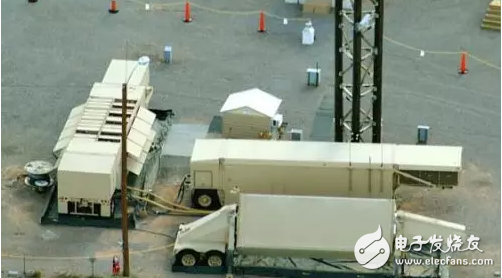
Sader Radar has received much attention, but its interceptor has the same potential
The entry of the Sade system into South Korea has triggered strong opposition from the Chinese government. It has also caused Chinese military enthusiasts to pay considerable attention to Sade. The performance of the Sade system has become the focus of attention. The US military stationed in South Korea deployed the Sade system, the main threat is its AN/TPY-2 fire control radar, and the Sade interceptor is considered to be a small threat because of its limited range, but is it really true? The Sutter system's FTT-18 test shows that the performance of the Sade interceptor is also worthy of attention. The performance of this kind of maneuver deployment anti-missile system is far stronger than the propaganda, and its development model will pose a threat to China's strategic missiles.
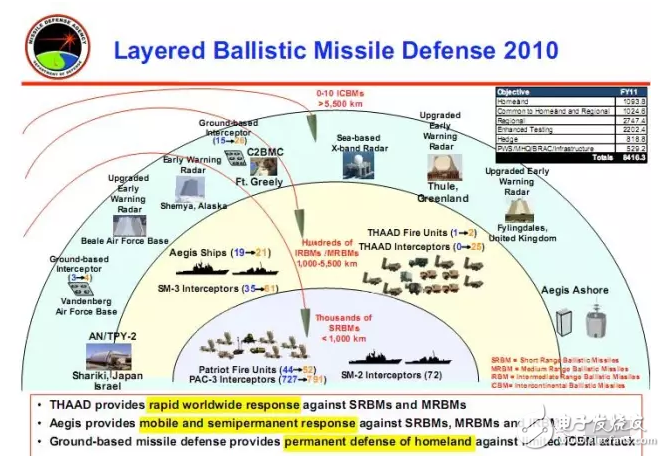
The US Missile Defense Agency’s annual briefing has stated that Sade is used to defend short- and medium-range missiles, but in fact it can also be used to intercept long-range missiles.
The Saad system is a tactical anti-missile system developed by the United States in the 1990s. Its original name is the Theater high-altitude regional defense system, abbreviated as THAAD. Later, the Missile Defense Agency renamed it the Terminal High-altitude Regional Defense System. Continue to use the abbreviation of THAAD. In 2001, the United States withdrew from the "Anti-Ballistic Missile Treaty". In order to nominally abide by the ABM Treaty, the US official said that the Sade system could only intercept short- and medium-range ballistic missiles within a range of 3,500 kilometers. However, this does not mean that the Sade system has such a strong anti-missile capability. The US arms dealers left a large margin during the development phase, allowing it to simply upgrade or even intercept ballistic missiles with longer range without upgrading. In the FTT-18 test, the Sade interceptor shot down the long-range ballistic missile target, which is actually not an accident.
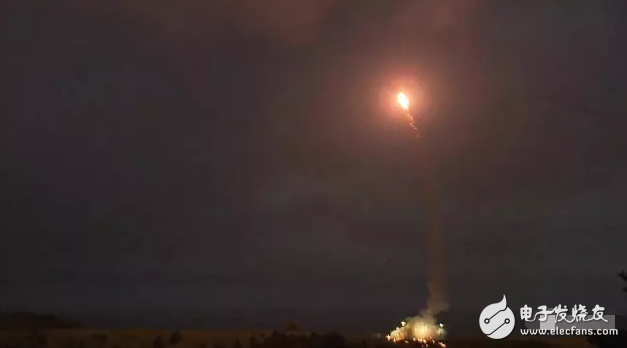
In the FTT-18 test, the Saad system successfully intercepted a medium-long-range ballistic missile target. The picture shows the interceptor launched by Kodiak Island.
This is the case with the US Navy's Standard-3 missile. Both Sadr and Standard-3 intercepted medium- and short-range ballistic missile anti-missile missiles in early propaganda, but the Standard-3 missile successfully shot down LV in the 2011 FTM-15 test. The -2 medium-range long-range ballistic missile target. Since then, the US Missile Defense Agency has officially designated the Aegis anti-missile system as an anti-missile system with medium- and long-range ballistic missile interception capabilities. The Sade system also successfully shot down the medium- and long-range ballistic missile targets in 2017. It is only a medium- and long-range target of the C-17 air-launched aircraft. Since then, the US Missile Defense Agency has not need to continue to cover up, so that the Saad system can be intercepted and intercepted. The tactical anti-missile system of ballistic missiles. The Sade system shows that it is far superior to the official propaganda interception ability, but this is the upper limit of its ability, in fact, it is not!
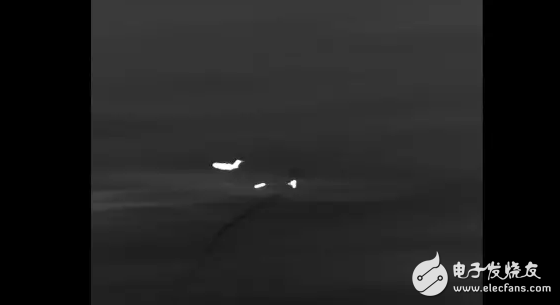
The Aegis anti-missile FTM-15 test uses the LV-2 target, while the Saad system uses the C-17 launch of the airborne long-range target.
Similarly, in the case of the Standard-3 missile, the Standard-3 missile in the "Flame Frost" anti-satellite test in 2008 successfully shot down the USA193 satellite, proving that it can intercept the target speed of 7 km / sec without hardware modification. In other words, it has intercontinental missile interception capabilities. However, few people have noticed that the US military has expressed the anti-missile system that was evaluated before the interception of the anti-defense interception. The alternative is not only the ground-based mid-course missile defense system (GMD) but also the Aegis anti-missile system using the standard-3 missile (Aegis BMD), and the last high-altitude regional defense system, which is the Saad system! In short, the US military knows that the Sade system has the ability to intercept ballistic missiles and even intercontinental missiles with a longer range, but it is rarely said to the outside world, but it will be confirmed after half a push and half of the test.
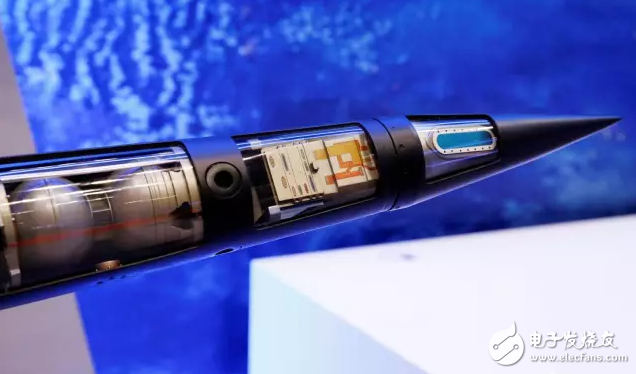
THAAD's kinetic energy warheads have been considered for engagement in the atmosphere and can be used to intercept intercontinental missiles with bait if necessary.
The United States Union of Concerned Scientists (UCS) pointed out more than a decade ago that the Saad system has limited intercontinental missile defense capabilities. They also believe that the Saad system has a unique ability to intercept the atmosphere inside and outside. After the atmospheric resistance "filters" the bait accompanying the warhead, the Saad system only needs to intercept the remaining warheads, thus avoiding the toughest bait in the middle interception. Identifying problems is expected to play a unique role in the US missile defense system. However, from the current procurement and deployment, the US Missile Defense Agency only intends to purchase seven Sadren, and apparently does not intend to use the Saad system as the final defense of the intercontinental missile defense. This shows that the US military believes that the local intercontinental missile defense is not under pressure. . Of course, this understanding is more tragic to Sade's producer Lockheed Martin. Loma has been advocating threats such as super-aircraft and medium-range ballistic missiles, and has promoted the upgrade of the Saad system. Having said that, the current Sade missile can also intercept intercontinental missiles, but the range is too close and the defense range is too small, which lacks practical value.
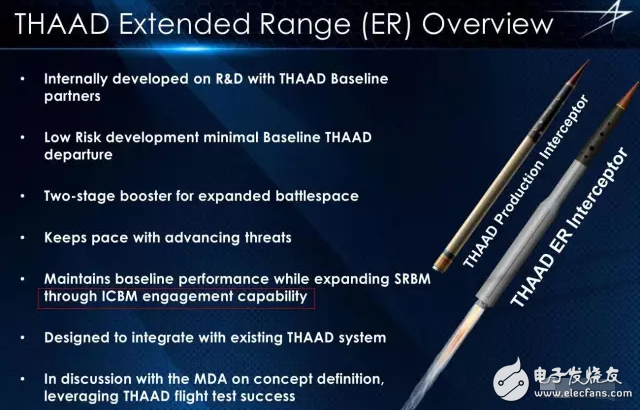
Loma Company clearly stated that ETI/THAAD has intercontinental missile interception capability
Loma's upgrade program is the development of the Sade (ETI), also known as the extended-range Sade (THAAD-ER). Loma's promotional materials clearly indicate that by using the MK 72 solid rocket engine with a larger diameter and higher performance, the ETI interceptor is faster and the effective range will be increased to more than three times that of the standard Sade. For the original 9-12 times, ETI missiles also have the ability to intercept hypersonic weapons. Loma also did not forget to mention that ETI missiles have intercontinental missile interception capabilities. The ETI upgrade only needs to replace the original Sade missile with the ETI/THAAD-ER missile. The rest of the system remains unchanged, and the combat effectiveness is enhanced while maximizing the use of the original assets. Because the US military faces a small amount of anti-missile pressure, it is currently The ETI project is still only the sales promotion of Loma, not the official project of the US missile defense. However, the development of ETI missiles has no insurmountable technical obstacles. If necessary, the Sade system will upgrade the use of ETI missiles, which has a high practical value. Intercontinental missile killer.
7.5 Mm Nano Tip,Smart Pen Infrared,Infrared Pen Touch,Slim Infrared Pen
Shenzhen Ruidian Technology CO., Ltd , https://www.wisonens.com